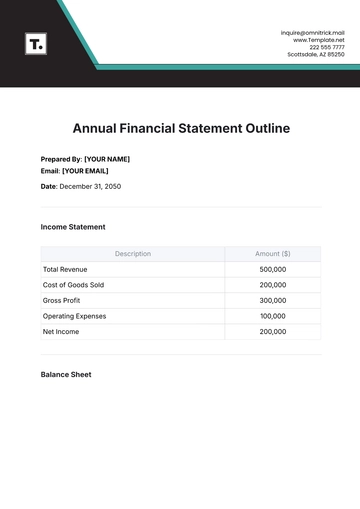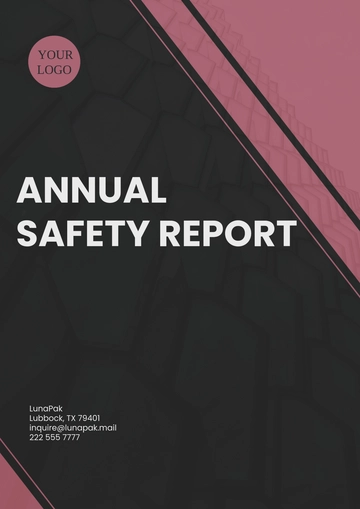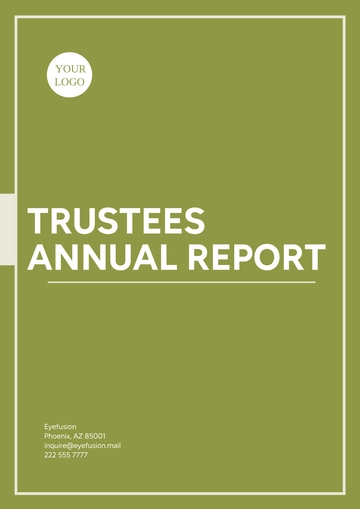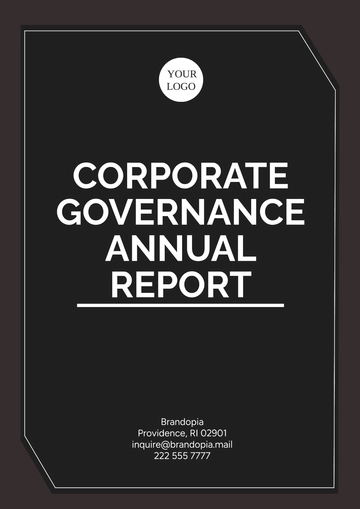Free Annual Health & Safety Training Report
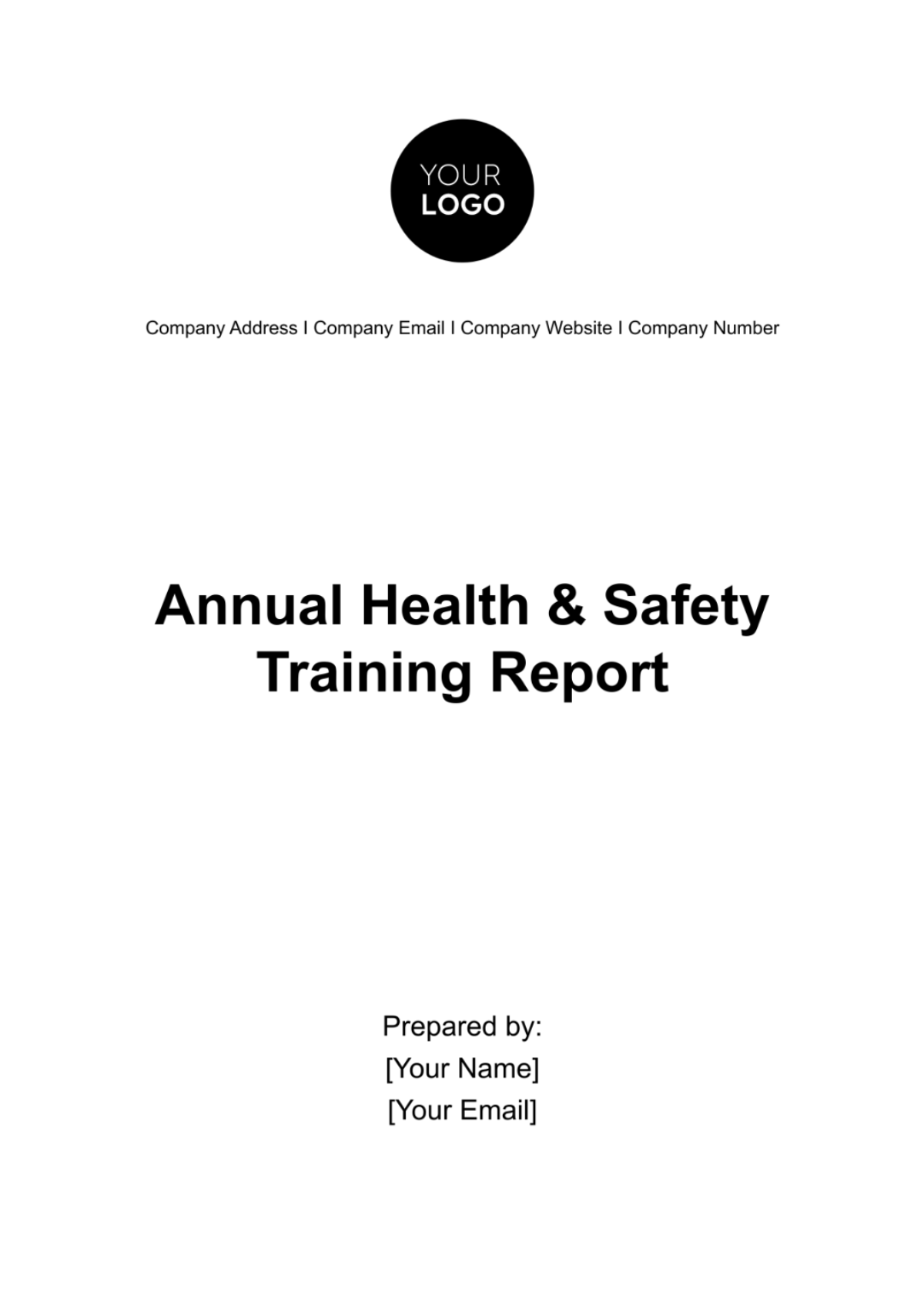
I. Executive Summary
This year's report highlights significant advancements in [Your Company Name]'s health and safety training initiatives. Key achievements include the successful integration of new technologies in training programs, improved employee engagement rates, and a notable reduction in workplace incidents.
II. Training Program Overview
Over the past year, our training programs have covered a wide range of safety topics tailored to different job roles and risks. We expanded our curriculum to include new areas such as mental health in the workplace and ergonomic safety, reflecting our commitment to comprehensive safety education.
Significant updates to training content were made to align with the latest industry standards and regulatory changes. This included revising modules on hazardous material handling and emergency response procedures. The introduction of case studies and real-life scenarios helped in contextualizing the training material, making it more relatable and effective.
We adopted a blended learning approach, combining traditional in-person training with online modules and interactive sessions. This hybrid model facilitated greater flexibility and accessibility, catering to the diverse learning preferences and schedules of our employees.
III. Training Participation and Compliance
Participation in health and safety training programs was robust, indicating a positive reception among employees. The following table provides a detailed breakdown of participation and compliance rates across various training modules:
A. Training Participation and Compliance Rate Table
Training Module | Mandatory/ Voluntary | Participation Rate | Compliance Rate |
Workplace Safety Basics | Mandatory | 87% | 92% |
Emergency Response Procedures | |||
Ergonomic Safety | |||
Mental Health Awareness |
B. Key Insights
The data reflects high compliance rates in mandatory training, along with encouraging participation in voluntary modules. However, the relatively lower engagement in voluntary modules such as Mental Health Awareness suggests a need for more targeted promotion and incentives.
To further boost participation, especially in voluntary programs, we implemented initiatives like flexible scheduling, recognition rewards, and interactive training elements. These efforts contributed to an overall positive trend in training engagement.
IV. Training Effectiveness and Impact
Evaluating the effectiveness of our training programs, we used key performance indicators to measure the impact on safety practices and incident rates. Our findings showed a significant decrease in workplace accidents and safety violations, indicating the positive influence of our training.
Safety audits conducted post-training sessions revealed improved adherence to safety protocols and procedures. Employees demonstrated enhanced knowledge and skills in handling emergency situations, which was evident in the reduced number of near-misses and safety-related incidents.
Here is a clear and simple table summarizing the effectiveness and impact of various health and safety training programs at [Your Company Name]:
Training Program | Pre-Training Incident Rate | Post-Training Incident Rate | Improvement |
Workplace Safety Basics | 5.0 | 3.0 | 40% |
Emergency Response Procedures | |||
Hazardous Materials Handling | |||
Ergonomic Safety | |||
Cybersecurity Awareness |
This table indicates the reduction in incident rates post-training across various programs, reflecting the overall improvement in workplace safety due to the effectiveness of the training initiatives. The percentage improvement column highlights the relative reduction in incident rates, providing a clear measure of the impact of training on enhancing safety practices within the company.
V. Employee Feedback and Satisfaction
Feedback collected from employees through surveys and focus groups provided valuable insights into the perceived relevance and effectiveness of the training programs. The majority of the feedback was positive, with employees appreciating the practical applications and interactive elements of the training.
Some of the common suggestions included the need for more frequent refresher courses, especially in high-risk areas, and a request for additional training on specific equipment and procedures. Employees also expressed a desire for more scenario-based learning experiences.
Here is a simple and clear table summarizing the employee feedback and satisfaction for the health and safety training programs at [Your Company Name]:
Feedback Category | Employee Satisfaction | Common Suggestions |
Content Relevance | Highly satisfied | Include more real-life examples |
Training Methods | Moderately satisfied | More interactive and hands-on sessions |
Frequency of Training | Varies by department | Increase refresher courses |
Access to Training | Needs improvement | Improve online platform accessibility |
Support and Resources | Satisfactory | Provide additional learning materials |
This table provides insights into how employees perceive different aspects of the training programs. The high satisfaction with content relevance is encouraging, while the varied satisfaction with training frequency and the need for improvement in access to training highlight areas that require attention.
The common suggestions gathered offer valuable guidance for enhancing the training experience and effectiveness. Addressing these feedback points is essential for ensuring that the training programs meet the needs and expectations of the employees at [Your Company Name].
VI. Challenges and Barriers
During the year, we faced several challenges in implementing our training programs. One of the primary issues was scheduling conflicts, particularly for in-person sessions, which affected participation rates. Technical difficulties with some of the online training modules also posed a challenge. Additionally, engaging remote and field-based employees in regular training sessions was a consistent challenge, requiring more flexible and accessible training solutions.
To overcome these challenges, we are exploring solutions such as on-demand online training, mobile-friendly training content, and decentralized training sessions for remote teams. Addressing these barriers will be crucial for ensuring widespread and effective training participation. Here is a simple and clear table summarizing the challenges and barriers encountered in the health and safety training programs at [Your Company Name]:
Challenge/Barrier | Impact on Training |
Scheduling Conflicts | Reduced participation in in-person sessions |
Technical Issues with Online Modules | Hindered completion and effectiveness of online training |
Engaging Remote Workers | Lower engagement and training effectiveness for remote staff |
Limited Training for Specific Equipment | Inadequate skill development for specialized equipment use |
Lack of Interactive Content in Online Training | Decreased engagement and retention in online training |
VII. Recommendations and Action Plan for Next Year
Based on this year's analysis, we recommend the following actions to enhance our health and safety training programs:
Enhance Engagement with Technology-Driven Learning Tools:
To significantly improve engagement and retention of training material, it is essential to incorporate cutting-edge, interactive online modules. Additionally, the use of virtual reality (VR) scenarios should be expanded. These VR simulations will provide immersive learning experiences, closely mimicking real-life situations, thereby boosting the effectiveness of the training.
Targeted Training for High-Risk Zones and Specific Roles:
A focused approach is recommended for areas and job roles identified as high-risk. This includes developing customized training modules that address the unique challenges and risks associated with these roles. Furthermore, it is imperative to establish a schedule for frequent refresher courses, ensuring that the employees' knowledge and skills remain current and effective in preventing accidents and ensuring safety.
Inclusive Strategy for Remote and Field-Based Employees:
Recognizing the diverse locations and environments of our workforce, a comprehensive strategy is needed to incorporate remote and field-based employees into our regular training schedule. This strategy should leverage digital platforms to deliver accessible, consistent training, ensuring that all employees, regardless of their location, receive the same high-quality safety education. The goal is to foster a uniformly high standard of health and safety practices across all sectors of the company, thereby minimizing risks and enhancing overall safety.
The action plan for the upcoming year includes setting timelines for the development and implementation of these recommendations, allocating necessary resources, and defining measurable goals. Regular reviews will be conducted to monitor progress and ensure alignment with our overall safety objectives.
VIII. Technology Integration and Innovation in Training
This year, [Your Company Name] placed significant emphasis on integrating cutting-edge technologies into our training programs. We introduced virtual reality (VR) modules for immersive learning experiences, particularly beneficial for hazardous situation simulations. Additionally, mobile learning apps were developed to provide on-the-go training access, catering to the needs of our field staff and remote workers.
Innovative Training Methods:
Alongside technology, we explored innovative training methods such as gamification and interactive video-based learning. These methods proved effective in enhancing engagement, particularly among younger employees. The use of real-time feedback and interactive quizzes helped in reinforcing key safety concepts and ensuring a more participatory learning experience.
Future Technological Initiatives:
Looking ahead, we plan to further leverage technologies like augmented reality (AR) for on-site training and AI-driven personalized learning paths. These initiatives aim to tailor the training experience to individual learning styles and job-specific risks, thereby increasing the overall effectiveness of our training programs.
IX. Collaboration with External Safety Experts and Organizations
We established partnerships with external safety experts and organizations. These collaborations allowed us to bring in external perspectives and expertise, ensuring our training content remains current and comprehensive. Guest lectures, workshops, and seminars conducted by industry leaders were highly beneficial in providing our employees with insights into best practices and emerging trends in workplace safety.
Engagement with Regulatory Bodies:
Our ongoing engagement with key regulatory bodies and industry associations has been a cornerstone of our strategy. This proactive involvement has kept us well-informed about the evolving landscape of safety standards and regulations. As a result, our training programs are not only compliant with current requirements but are also at the forefront of adopting and integrating new safety protocols and practices.
Active Involvement with Regulatory Agencies and Industry Associations:
We maintained proactive engagement with key regulatory bodies and industry associations, keeping abreast of evolving safety standards and regulations. This involvement guarantees that our training programs are compliant and at the forefront of new safety requirements.
Plans for Extended Collaboration:
We are committed to further deepening these collaborative relationships. Our plans include active participation in leading industry safety forums and the initiation of joint training ventures with peer organizations. By expanding these collaborative efforts, we aim to not only enhance the quality and effectiveness of our own training programs but also to contribute significantly to fostering a culture of safety that extends beyond our organization, influencing the wider industry.
Integration of Advanced Safety Technologies:
We intend to leverage advanced safety technologies through our partnerships. This will include adopting cutting-edge tools and systems for risk assessment and accident prevention, as well as using data analytics to tailor our training programs more effectively. Collaborating with tech-focused safety organizations will provide us access to innovative solutions that can be integrated into our safety protocols.
Cross-Industry Safety Initiatives:
We also plan to initiate cross-industry safety initiatives. This approach involves partnering with organizations outside our immediate industry to gain a broader perspective on safety practices. Such interdisciplinary collaborations can lead to the discovery of unique safety solutions and strategies, fostering a more holistic approach to workplace safety. This initiative is expected to enhance our understanding of diverse safety challenges and solutions, benefiting our organization and the wider community.
X. Conclusion
The annual health and safety training report for [Your Company Name] reflects a year of substantial progress and learning. Our commitment to continuous improvement in health and safety training is unwavering, as evidenced by our efforts to adapt to employee needs, embrace new technologies, and meet evolving safety standards. We recognize that fostering a culture of safety is an ongoing journey, and we are dedicated to making [Your Company Name] a safer and healthier place to work.
- 100% Customizable, free editor
- Access 1 Million+ Templates, photo’s & graphics
- Download or share as a template
- Click and replace photos, graphics, text, backgrounds
- Resize, crop, AI write & more
- Access advanced editor
Elevate your workplace safety standards with Template.net's Annual Health & Safety Training Report Template. This editable and customizable solution, powered by our advanced Ai Editor Tool, simplifies the process of creating comprehensive training reports. Ensure compliance and promote a secure work environment effortlessly with Template.net's cutting-edge solutions.
You may also like
- Sales Report
- Daily Report
- Project Report
- Business Report
- Weekly Report
- Incident Report
- Annual Report
- Report Layout
- Report Design
- Progress Report
- Marketing Report
- Company Report
- Monthly Report
- Audit Report
- Status Report
- School Report
- Reports Hr
- Management Report
- Project Status Report
- Handover Report
- Health And Safety Report
- Restaurant Report
- Construction Report
- Research Report
- Evaluation Report
- Investigation Report
- Employee Report
- Advertising Report
- Weekly Status Report
- Project Management Report
- Finance Report
- Service Report
- Technical Report
- Meeting Report
- Quarterly Report
- Inspection Report
- Medical Report
- Test Report
- Summary Report
- Inventory Report
- Valuation Report
- Operations Report
- Payroll Report
- Training Report
- Job Report
- Case Report
- Performance Report
- Board Report
- Internal Audit Report
- Student Report
- Monthly Management Report
- Small Business Report
- Accident Report
- Call Center Report
- Activity Report
- IT and Software Report
- Internship Report
- Visit Report
- Product Report
- Book Report
- Property Report
- Recruitment Report
- University Report
- Event Report
- SEO Report
- Conference Report
- Narrative Report
- Nursing Home Report
- Preschool Report
- Call Report
- Customer Report
- Employee Incident Report
- Accomplishment Report
- Social Media Report
- Work From Home Report
- Security Report
- Damage Report
- Quality Report
- Internal Report
- Nurse Report
- Real Estate Report
- Hotel Report
- Equipment Report
- Credit Report
- Field Report
- Non Profit Report
- Maintenance Report
- News Report
- Survey Report
- Executive Report
- Law Firm Report
- Advertising Agency Report
- Interior Design Report
- Travel Agency Report
- Stock Report
- Salon Report
- Bug Report
- Workplace Report
- Action Report
- Investor Report
- Cleaning Services Report
- Consulting Report
- Freelancer Report
- Site Visit Report
- Trip Report
- Classroom Observation Report
- Vehicle Report
- Final Report
- Software Report









